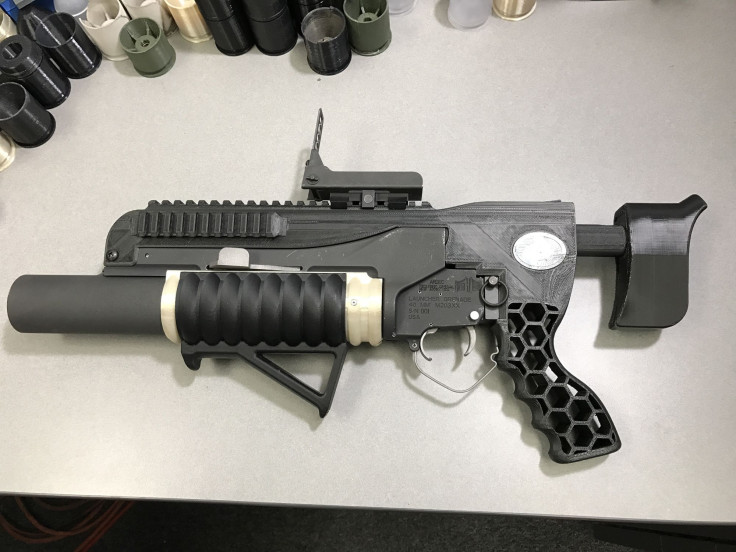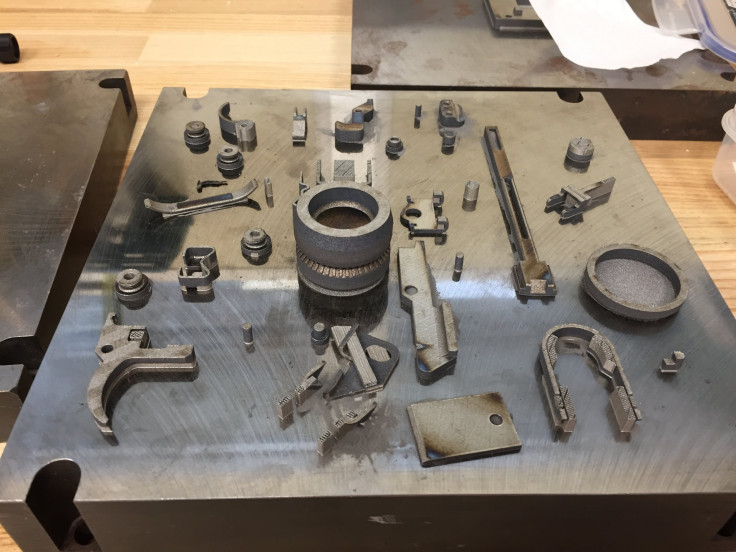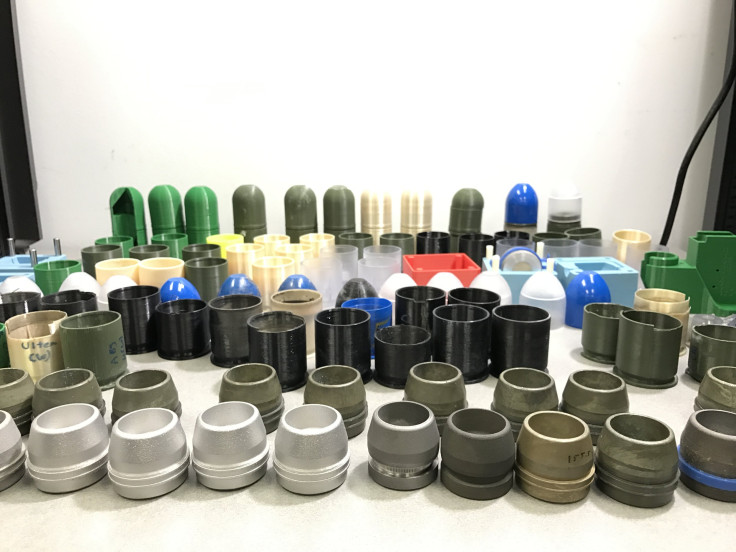RAMBO, World's First 3-D Printed Grenade Launcher: Watch It In Action [VIDEO]

Back in 2013 when the world’s first 3-D printed gun was made, it led to a huge uproar regarding gun control that even saw the United States Department of Defense demanding that information regarding its construction be taken offline. However, a new 3D-printed grenade launcher called RAMBO developed by the army faces no such issue.
RAMBO, an acronym that stands for Rapid Additively Manufactured Ballistics Ordnance, is a 40MM grenade launcher gun that is modeled on the M203 under-barrel grenade launcher. Developed by the U.S. Army Research, Development and Engineering Command (RDECOM) and other government agencies over six months, the gun is almost entirely (except the springs and fasteners), built by printing steel, aluminium, and other materials. In fact, even the ammunition, i.e. the grenades are 3-d printed.
The army conducted its first field fire tests in October of last year and was impressed by the performance of the weapon.
“The testing included 15 test shots with no signs of degradation. All the printed rounds were successfully fired, and the printed launcher performed as expected. There was no wear from the barrel, all the systems held together and the rounds met muzzle velocities within 5 percent of a production M781 fired from a production-grade grenade launcher. The variation in velocities were a result of the cartridge case cracking, and the issue was quickly rectified with a slight design change and additional 3-D printing,” the Army described RAMBO’S performance in a press release issued on 1st March.


The prototype weapon is expected to be a beneficial investment as it dramatically lowers the cost of production and the technology may eventually also help troops stationed in outposts to be self-reliant. The troops may print their own weapons or critical replacement parts rather than make risky supply runs.
"The tooling and setup needed to make such intricate parts through conventional methods would take months and tens of thousands of dollars, and would require a machinist who has the esoteric machining expertise to manufacture things like the rifling on the barrel," said the Army. However, admittedly, it also raises concerns about other machinists with “esoteric machining expertise,” creating weapons like RAMBO and wreaking havoc with them.
© Copyright IBTimes 2024. All rights reserved.






















